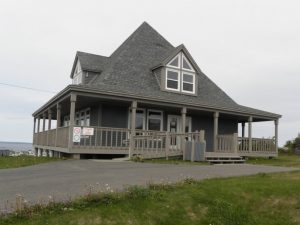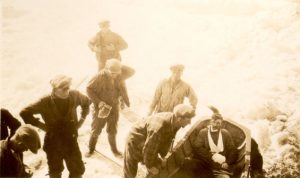Fogo Island
The station that helped bridge the gap between Newfoundland and Labrador was on Fogo Island. This small station began operations in 1911. Its main purposes were to communicate with sealing vessels and with the Labrador wireless stations. To do this, the CMC built a station with one of the greatest ranges of any in Newfoundland at the time. It could send and receive signals over 464 kilometres.
The station operated from eight a.m. to eight p.m. for most of the year. However, during sealing season, it would run 24 hours a day. The operator and their family lived out of the station itself, for ease of access.
Sealing Disasters
The Fogo station played a significant communications role in two major sealing disasters. The first was in 1914. The SS Newfoundland dropped off 132 men to go seal hunting on the ice. A breakdown in communications and a major winter storm resulted in the sealers being left on the ice for more than two days without food or shelter. By the time their ship realized what had happened, 78 sealers had frozen to death.
The second disaster was in 1931. The SS Viking had been hired to take a film crew on a sealing expedition. Travelling through ice fields to go sealing is dangerous. Getting caught in the ice was one of the greatest risks, so ships often carried dynamite to break themselves free. After gunpowder on the Viking was mishandled, an explosion sank the ship. Twenty-eight people were killed.
In both emergencies, the Fogo station was the first land-based responder, relaying the news to other vessels who could assist in rescue efforts.
Closing the Station
The Fogo Island station closed in 1933, probably because of the type of generators used at the station. Many stations needed generators on site because electricity was not widely available. The generators used at the Fogo station produced radio interference, which affected reception on home radios. Home radios had become more and more popular for entertainment and spreading news, so this interference was a major problem. When this type of generator was banned internationally, the Fogo station closed.



